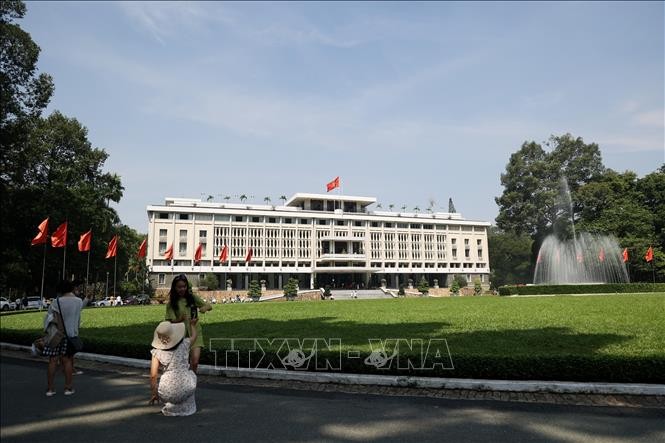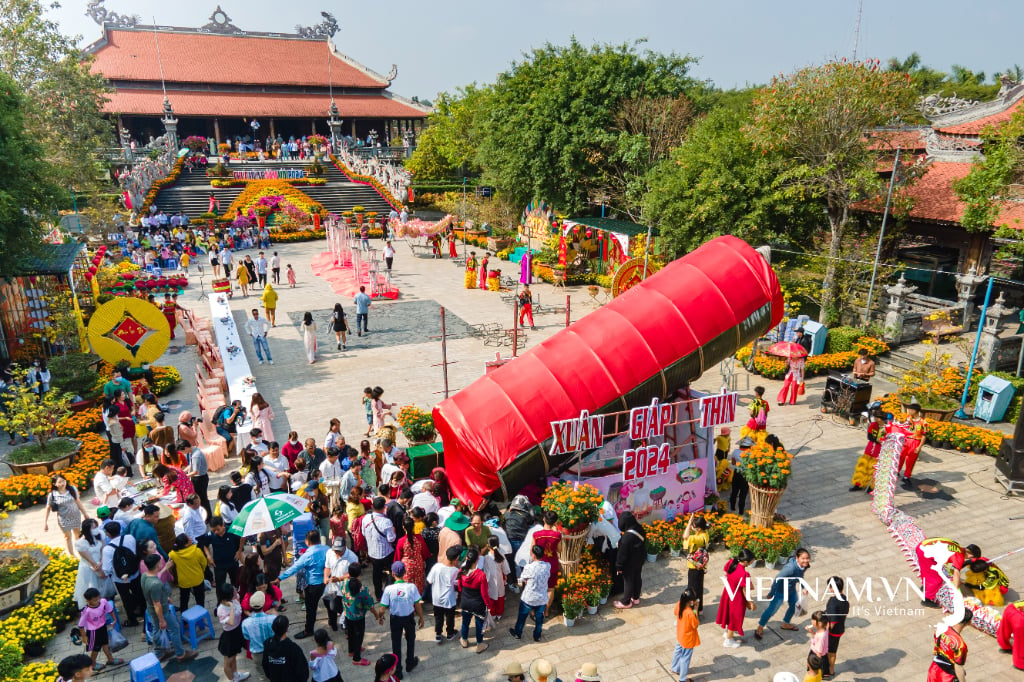Before the historic day of April 30, 1975, the Independence Palace was one of the nerve centers of the Saigon government, witnessing the brutal foreign military intervention that caused the war in Vietnam. After liberation, it became a distinctive architectural work and a special historical monument – preserving the memories of the victory that marked the end of the historic Ho Chi Minh Campaign, liberating the South and unifying the country. This is also the meaning of the building's current name – the Reunification Hall.

The mark of the historic April 30th
In the final days of April 1975, the Ho Chi Minh Campaign, with five army units advancing from five directions, launched a general offensive against Saigon - Gia Dinh. These units, brimming with enthusiasm and employing a "lightning-fast" attack strategy, caused significant internal divisions within the Saigon puppet government.
Colonel Nguyen Van Tau (alias Tran Van Quang - Tu Cang), Hero of the People's Armed Forces, at that time the Political Commissar of the 316th Special Forces Brigade, a unit that, along with the 3rd Corps (Central Highlands Army), launched attacks from the Northwest towards the Independence Palace, is now 98 years old but still remembers all the important historical events, especially April 30, 1975.
Mr. Tu Cang recalled that as the troops advanced towards Saigon like a "waterfall," at 9:30 a.m. on April 30, 1975, at the Independence Palace, President Duong Van Minh broadcast a declaration on Saigon radio announcing a unilateral ceasefire and the handover of power to the Provisional Revolutionary Government of the Republic of South Vietnam. However, the declaration was no longer valid at that time. Simultaneously, the spearhead of the 2nd Army Corps, after crushing several important targets in Thu Duc, successively crossed the Saigon Bridge and the Thi Nghe Bridge, advancing directly towards the Independence Palace.

At exactly 11:30 AM on April 30, 1975 – the moment signaling the complete victory of the historic Ho Chi Minh Campaign – the Independence Palace became a historical "witness," preserving the imprint of this glorious victory and marking the end of the Saigon regime.
Recalling that historic moment, Captain Vu Dang Toan, former company commander and tank commander who rammed through the gates of the Independence Palace on the afternoon of April 30th, shared: "That was the most wonderful, most heroic, and unforgettable moment for me and my comrades. So many soldiers and compatriots sacrificed their lives for our tanks to reach the gates of the Independence Palace. I myself never imagined that I would witness those glorious historical moments of the great Ho Chi Minh Campaign."
A monument symbolizing reunification.
Built in 1868, the Independence Palace was originally named Norodom Palace. In 1962, it was rebuilt according to the design of architect Ngo Viet Thu, the first Vietnamese to win the Rome Prize (a prestigious award for young talents in music, painting, sculpture, and architecture). According to architect Ngo Viet Nam Son, son of Ngo Viet Thu, his father skillfully incorporated a message about Vietnam's sovereignty into the overall design of the Independence Palace's facade.
“The philosophical meaning incorporated into the facade of the Independence Palace includes: the character “tam” (three horizontal strokes, representing humanity, enlightenment, and martial prowess); the vertical stroke representing the character “chủ” (master), emphasizing Vietnam's sovereignty; at the top is the character “trung” (loyalty to the country); and the overall facade forms the character “hưng” (prosperity), expressing the designer's aspiration for a perpetually prosperous nation,” architect Ngo Viet Nam Son explained.

The architectural beauty of the Independence Palace is further showcased by the elegant stone curtain resembling bamboo stalks surrounding the second floor. At that time, architect Ngo Viet Thu created a modern architectural style based on distinctly Eastern philosophical thinking. The curtain also drew inspiration from the ancient architectural style of the ornate doors in the Hue imperial palace. Another difference is that instead of a curved roof repeating the classical Vietnamese architecture, Ngo Viet Thu proposed a concrete roof with a slightly recessed, curved shape to evoke the image of ancient architecture, but with a completely modern spirit.
Dr. Ta Duy Linh, Director of the Institute for Economic and Tourism Research in Ho Chi Minh City, stated that the Independence Palace is not only a special national monument but also a unique symbolic space of modern Vietnamese political culture. From a historical center of power, it has transformed into a focal point of national memory, aspirations for peace, territorial unity, and community harmony in a nation that once experienced division. From a cultural perspective, the Independence Palace not only symbolizes the end of war but also opens up a grand discourse on national unity and harmony.
According to Dr. Ta Duy Linh, at its symbolic depth, the Independence Palace is the embodiment of the will for harmony and unity, a place where the past is commemorated, not merely rehashed. It is a space of Vietnamese resilience, demonstrating the ability to overcome pain, resolve differences with tolerance, and transform historical memory into a driving force for building a nation united in will and action. Therefore, preserving and promoting the value of the Palace today requires a modern cultural strategy aimed at reviving the symbol, not just "framing" it within nostalgia. "The Independence Palace could become a center for civic education, a heritage experience space, where the younger generation is inspired to understand that peace, unity, and harmony are not a finished matter, but a journey that needs to be nurtured through each generation," said Dr. Ta Duy Linh.
Source: https://baolaocai.vn/dinh-doc-lap-dau-an-dac-biet-ve-chien-thang-lich-su-cua-dan-toc-post400413.html




![[Photo] Prime Minister Pham Minh Chinh presides over the conference announcing the establishment of the International Finance Centre in Vietnam.](/_next/image?url=https%3A%2F%2Fvphoto.vietnam.vn%2Fthumb%2F1200x675%2Fvietnam%2Fresource%2FIMAGE%2F2025%2F12%2F21%2F1766309817714_ndo_br_dsc-3400-jpg.webp&w=3840&q=75)


![[Photo] Prime Minister Pham Minh Chinh presides over a meeting on private sector economic development.](/_next/image?url=https%3A%2F%2Fvphoto.vietnam.vn%2Fthumb%2F1200x675%2Fvietnam%2Fresource%2FIMAGE%2F2025%2F12%2F20%2F1766237501876_thiet-ke-chua-co-ten-40-png.webp&w=3840&q=75)

























































































Comment (0)